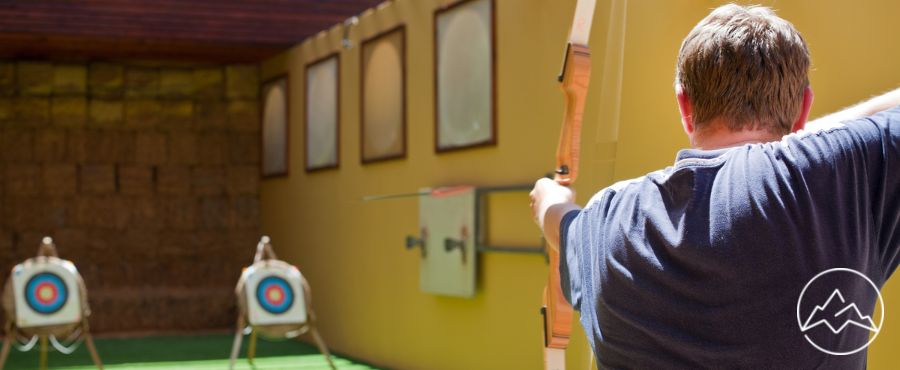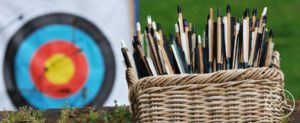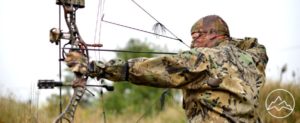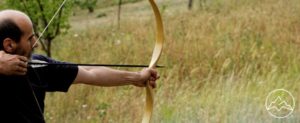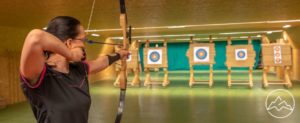Archery, an ancient and noble sport, requires dedication and practice to master. Like the steady release of an arrow, consistent training is the key to honing one’s skills in this discipline. Just as archers carefully select their arrows, we must carefully select our practice routines to improve our shooting abilities. This article serves as the ultimate practice guide for mastering archery, offering valuable insights and techniques for archers of all skill levels.
To embark on this journey, the first step is finding a suitable practice location. A safe and secure environment, such as an archery range or a spacious backyard, ensures both personal safety and the safety of others. With the right setting in place, archers can then tailor their practice regimen according to their skill level, gradually increasing the frequency and intensity of their sessions. Incorporating various practice routines, such as the Blank Bale Shooting drill or the Angle Drills, adds excitement and challenges to the training process.
In the pages that follow, we will explore these practice routines in detail, delving into the intricacies of form, stance, posture, and shooting techniques. We will also uncover the secrets to overcoming target panic and improving accuracy through targeted drills. Let us embark on this archery journey together, as we strive to master this ancient art through consistent and tailored practice.
Key Takeaways
- Practice is essential for improving shooting skills and maintaining consistent results in archery.
- Finding an adequate place to shoot, whether at home or at an archery range, is important for practice.
- Tailoring practice sessions to skill level and focusing on specific areas for improvement can lead to better results.
- Incorporating practice routines and drills, such as the Blank Bale Shooting drill and Angle Drills, can help improve skills and make practice more exciting.
Finding a Practice Location
Finding an appropriate practice location is crucial for archers to ensure they have enough space and a secure backstop to shoot their arrows. Outdoor ranges are ideal for archery practice as they provide ample space and various distances to shoot at, allowing archers to enhance their skills at longer ranges. These ranges often have designated shooting lanes and targets, making it convenient for archers to focus on their practice. Additionally, setting up a backyard range can be a viable option for archers who prefer practicing at home. This requires sufficient space and a secure backstop, such as a concrete wall, to prevent any accidents. It offers the convenience of practicing whenever desired, without the need to travel to a separate location. Overall, finding a suitable practice location is essential for archers to optimize their practice sessions and improve their shooting abilities.
Tailoring Practice to Skill Level
Adapting practice sessions to individual skill levels ensures targeted improvement and optimized results in archery. Improving consistency is a key focus when tailoring practice to skill level. For beginners, it is important to start with the basics and focus on developing proper form and technique. Setting achievable goals, such as shooting a certain number of arrows per session, helps beginners track their progress and stay motivated. Intermediate archers can implement new elements into their practice sessions, such as incorporating drills and routines to challenge their skills and improve accuracy. Advanced archers, on the other hand, may benefit from focusing on specific areas for improvement and fine-tuning their technique. By tailoring practice to skill level, archers can maximize their training and steadily progress towards their goals.
Incorporating Practice Routines
Incorporating structured practice routines can enhance the effectiveness of archery training sessions and facilitate skill development. One such routine is Blank Bale Shooting, which focuses on fundamental aspects such as stance, grip, posture, and breathing, without the need to aim at a specific target. This drill allows archers to refine their form and technique without the distraction of aiming, enabling them to develop muscle memory and consistency. Additionally, Count Down Drills can help improve concentration and control. This involves waiting for the opportune moment to shoot, enhancing mental discipline and precision. By integrating these practice routines into regular training sessions, archers can further hone their skills and improve their overall performance. These structured drills not only add variety to practice sessions but also contribute to the mastery of archery techniques.
Frequently Asked Questions
How can I improve my focus and concentration while practicing archery?
To improve focus and maintain concentration while practicing archery, it is essential to adopt specific techniques. One effective method is the use of visualization, a powerful rhetorical device that allows archers to mentally picture their desired outcome. By envisioning a successful shot before taking aim, archers can enhance their focus and concentration. Additionally, incorporating mindfulness techniques, such as deep breathing and staying present in the moment, can help in maintaining concentration throughout the practice session.
What are some common mistakes to avoid while practicing archery?
When practicing archery, it is important to be aware of common mistakes that can hinder technique improvement. One common mistake is gripping the bow too tightly, which can affect accuracy and consistency. Another mistake is improper stance and posture, which can lead to inconsistent shots. Inadequate follow-through, such as releasing the bowstring too quickly, can also impact accuracy. It is crucial to address and correct these mistakes to improve overall shooting technique and achieve better results.
Are there any specific warm-up exercises or stretches recommended before archery practice?
In the context of archery practice, incorporating warm-up exercises and stretches can be beneficial to prepare the body for the physical demands of shooting. Research suggests that engaging in a proper warm-up routine can help increase flexibility, improve range of motion, and reduce the risk of injury. Some recommended warm-up exercises for archery include arm circles, shoulder stretches, trunk rotations, and wrist mobility exercises. These exercises help loosen up the muscles and joints, enhance blood flow, and optimize performance during practice sessions.
How can I track my progress and measure improvement in my archery skills?
Tracking progress and measuring improvement in archery skills can be achieved through various methods. One common approach is keeping a record of shooting scores, noting the number of arrows shot and the score achieved. This allows archers to track their performance over time and identify areas that need improvement. Additionally, archers can track their consistency by monitoring groupings on the target. Another effective method is setting specific goals and evaluating whether they are being met. Regularly assessing these factors can provide valuable insights into an archer’s progress and help guide their practice sessions.
Are there any recommended resources or books for further improving my archery technique?
When seeking to further improve archery technique, there are several recommended resources and books available. “The Art of Archer: A Comprehensive Guide to Archery Technique” by Simon Needham provides detailed instructions and exercises to enhance shooting form, stance, and accuracy. Another valuable resource is “Precision Archery: Techniques, Tactics, and Training” by Steve Ruis and Claudia Stevenson, which offers insights into advanced techniques and strategies for improving shooting skills. These resources offer valuable knowledge and guidance for individuals looking to enhance their archery technique and take their skills to the next level.
Conclusion
In conclusion, consistent and tailored practice is key to mastering archery. Beginners should focus on the basics and form, while intermediate and advanced archers can implement new things into their practice sessions. Incorporating various practice routines and drills, such as Blank Bale Shooting and Angle Drills, can make practice more exciting and effective. Shooting at different parts of the target helps overcome target panic. Safety precautions, like using a secure backstop, are essential. With dedication and practice, archers can improve their accuracy and consistency, becoming true masters of the sport.

